Article Excerpt
Learn more about different textures for your walls and ceilings and which one might be right for your home.
Wall and ceiling textures offer a way to decorate a room, or even give it some personality. Certain types of texture can help hide defects or imperfections in a wall or ceiling, saving you from much more expensive structural repairs. Perhaps you are familiar with some common textures, but you might not know about all of the options available to you. Many of these textures are feasible DIY home-improvement projects. First, though, you should decide what you want to do.
What different types of wall and ceiling textures are out there?
If you lived through the 1970s or ’80s, or if you have ever been to a house built during that time, you are probably familiar with popcorn ceiling. This type of texture is not as popular as it once was. That’s about all we will say about it here.
Turning to textures for walls and ceilings that aren’t hopeless throwbacks to the Back to the Future era, you have many options. As a general rule, coarse textures can hide imperfections much better than flat and glossy surfaces. They also tend to paint better.
Comb texture
A toothed trowel can be used to create lines or grooves in drywall compound that form patterns or shapes.
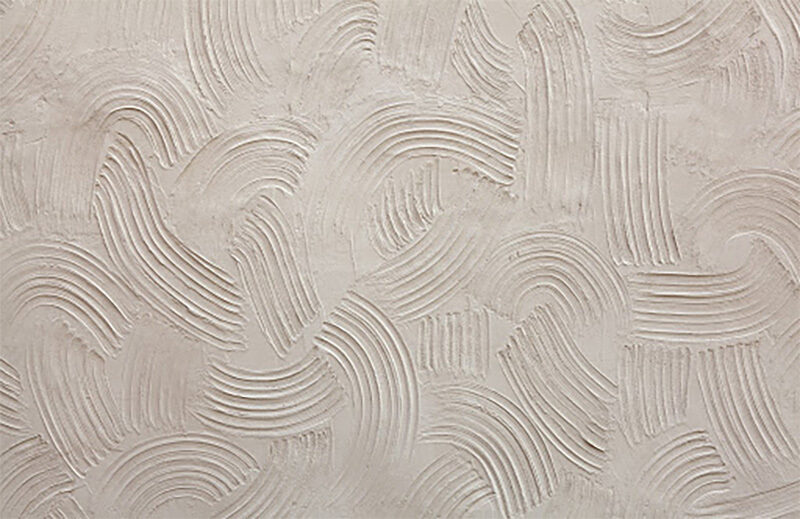
Image via Miranda Painting
Knockdown texture
This type of texture involves applying any kind of coarse texture, and then “knocking it down” by scraping a drywall knife across it to make the surface flatter.
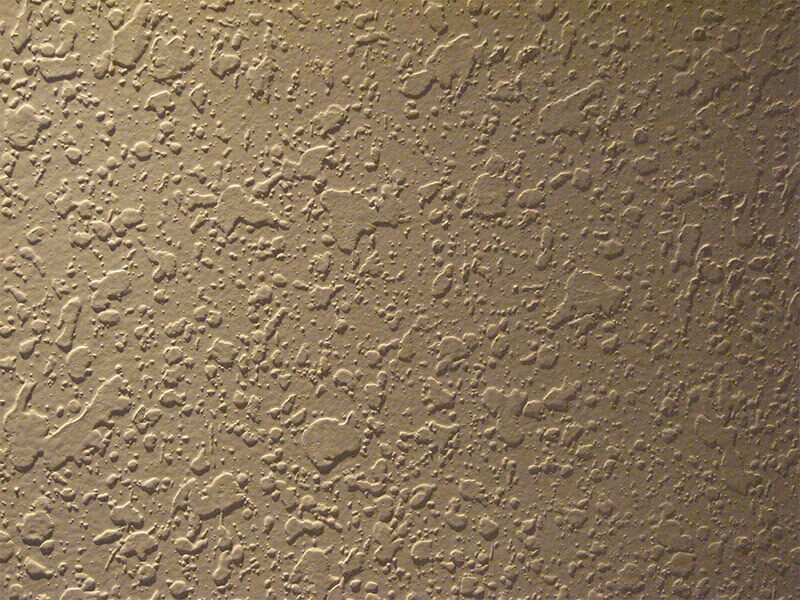
Image via Texture Master
Orange peel texture
Named for its resemblance to the skin of an orange, this texture is created by spraying drywall compound onto a wall or ceiling with a hopper gun.
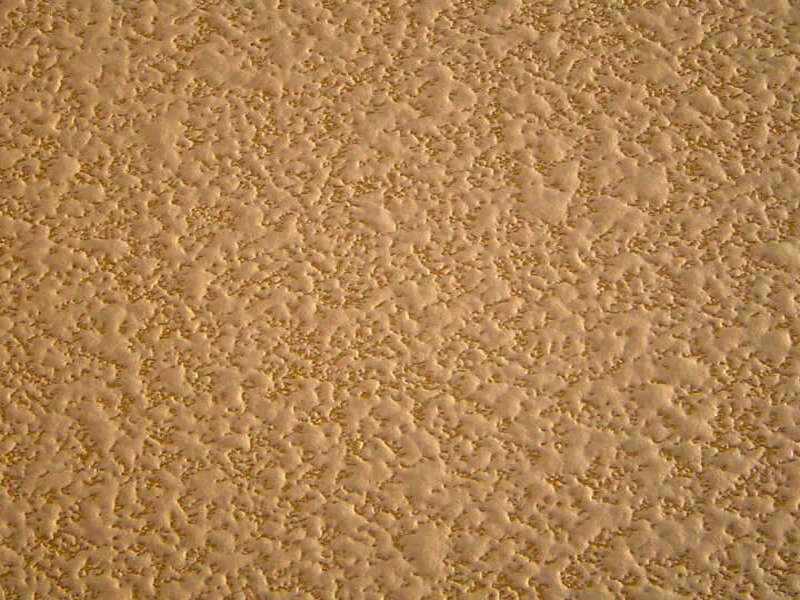
Image via Drywall Insider
Spray sand texture
Spray sand is more common on ceilings than walls. It uses a sand-based mixture known as perlite, which is sprayed onto the surface with a hopper gun.
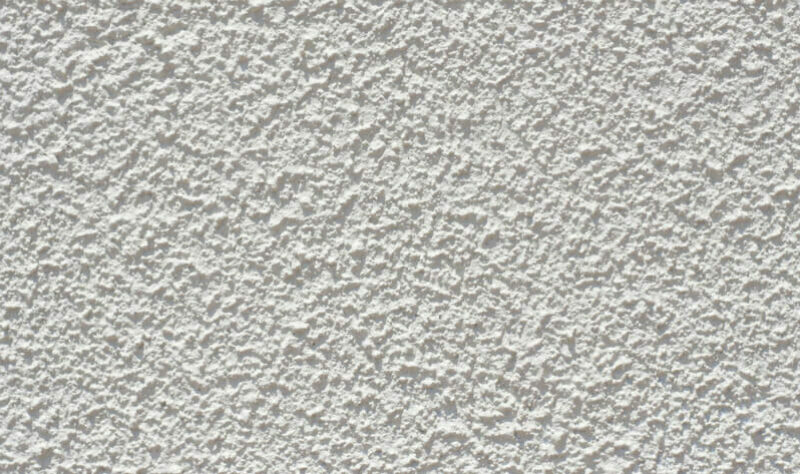
Image via Don Pedro Home Design
Sand swirl texture
This is a continuation of the spray sand method. Once the perlite has been sprayed onto the ceiling or wall, you can use a paintbrush to create shapes or patterns.
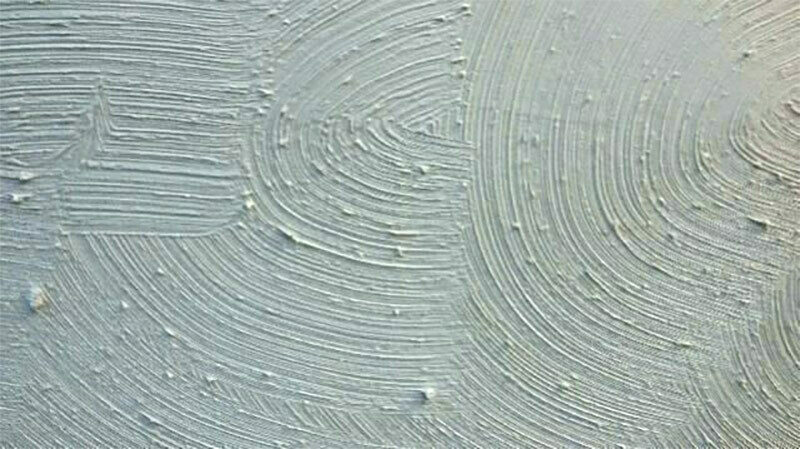
Image via Nimvo
Skip trowel texture
After applying a layer of drywall compound to a wall or surface, you can create textures by dragging a trowel across it at an angle.
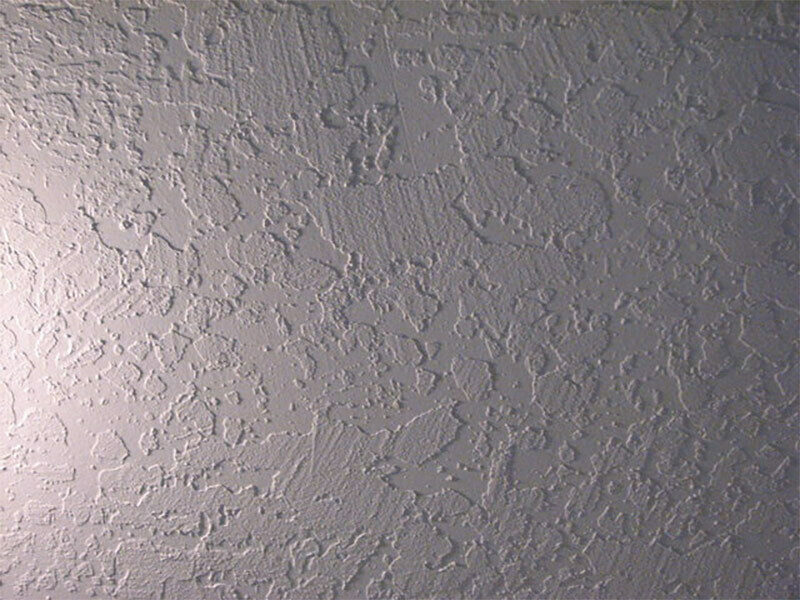
Image via Texture Master
Slap brush texture
This ridged texture results from dipping a large brush into drywall compound, then “slapping” it onto the ceiling or, less commonly, the wall.
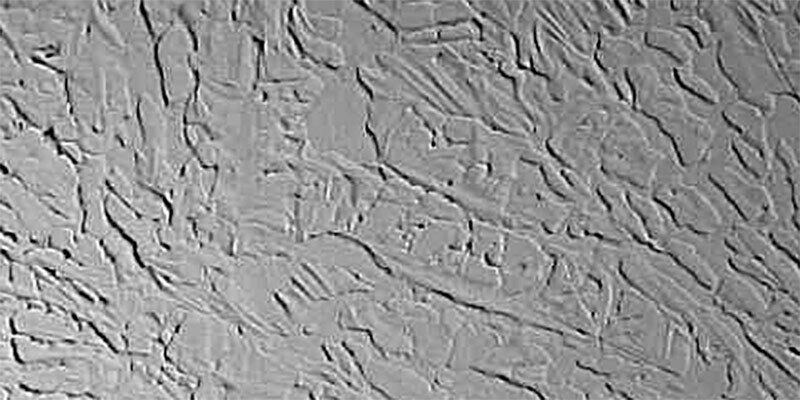
Image via Iklo Homes
Can you use different textures for the wall and ceiling?
You can, but they should not clash too much. Ceiling textures are often rougher than wall textures. You might consider using related textures, such as sand spray on the ceiling and sand swirl on the walls.
Should the whole house match?
As a general rule, yes, the whole house should match. If you have a strong artistic vision that requires you to texture one room differently from all the others, well, it’s your house.
What are modern home builds using?
The thing to remember about trends in new home builds is that times and tastes are always changing. Just because something is less popular in 2021 than it has been in the past does not mean you should not consider it for your home. What’s popular now are smooth textures (basically no texture at all), knockdown textures, and orange peel textures.
Can I retexture walls and ceilings myself?
Some types of texturing involve applying drywall compound to existing walls, then working with it to create textures. Others require the use of power tools, such as a hopper gun. Depending on your experience and comfort level with DIY home projects, you might be able to do any of the textures we have described here yourself. The cost of materials for this kind of job can range from $0.50 to $2.00 per square foot. Some people even use plastic grocery bags to apply texture.
You might prefer to hire a professional. If so, your budget should include both labor and DIY costs.
Get pre-approved!
Whether you’re buying a new home or making renovations where you live now, The Wood Group of Fairway is here to help you understand your home mortgage options. Get in touch today to get started on your free pre-approval!



